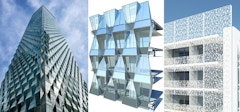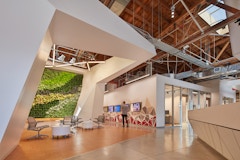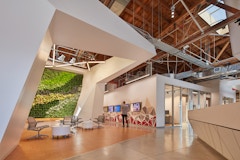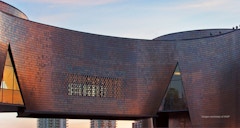
Balancing Visual Comfort and Energy Efficiency
With increasing interest in wellness and human-centric design in workplaces, the design of building enclosures is predicated on optimizing competing

With increasing interest in wellness and human-centric design in workplaces, the design of building enclosures is predicated on optimizing competing

Daylighting is a key strategy to energy efficiency and improved occupant comfort, health, and productivity in buildings. However, providing desired

For architects, designers, engineers, manufacturers, consultants, and owners' representatives interested in methods for designing high-performance facades.
Integrated management of commercial lighting, heating, ventilation and air conditioning systems is considered as one of the most promising building


Facade design is a key component of architectural expression, and increasingly a key design consideration due to growing importance of factors like:

Reducing GHG emissions related to energy use in buildings is a prominent obligation given their impact in terms of climate change. In this light,

Designing a sustainable rainscreen wall assembly has become an essential part of most new construction projects. Industry principles and energy codes

The journey to a zero net energy (ZNE) future starts with renovating the current paradigm of building design. The way buildings are designed today needs a retrofit in thinking so new projects meet the challenges of the global climate crisis.

The journey to a zero net energy (ZNE) future starts with renovating the current paradigm of building design. The way buildings are designed today needs a retrofit in thinking so new projects meet the challenges of the global climate crisis.

The journey to a zero net energy (ZNE) future starts with renovating the current paradigm of building design. The way buildings are designed today needs a retrofit in thinking so new projects meet the challenges of the global climate crisis.

The journey to a zero net energy (ZNE) future starts with renovating the current paradigm of building design. The way buildings are designed today needs a retrofit in thinking so new projects meet the challenges of the global climate crisis.

The journey to a zero net energy (ZNE) future starts with renovating the current paradigm of building design. The way buildings are designed today needs a retrofit in thinking so new projects meet the challenges of the global climate crisis.

The journey to a zero net energy (ZNE) future starts with renovating the current paradigm of building design. The way buildings are designed today needs a retrofit in thinking so new projects meet the challenges of the global climate crisis.
Los Angeles, CA – July 16, 2015 - While most of the green building dialog focuses on new construction, many have recognized that the fastest and most effective way to improve energy efficiency of the building sector is by remedying our existing building stock.

The gap between simulated and actual energy performance has hobbled progress towards important carbon reduction goals in buildings and urban habitat. This summit advocates the need for improved energy modeling and the development of best practices, with emphasis on the building façade.


Buildings account for over 40% of global emissions (GlobalABC, 2018). Growing populations and higher standards of living are increasing pressure on


Contemporary building practice represents a disconnect between traditional manufacturing techniques, that favor straight runs and orthogonal